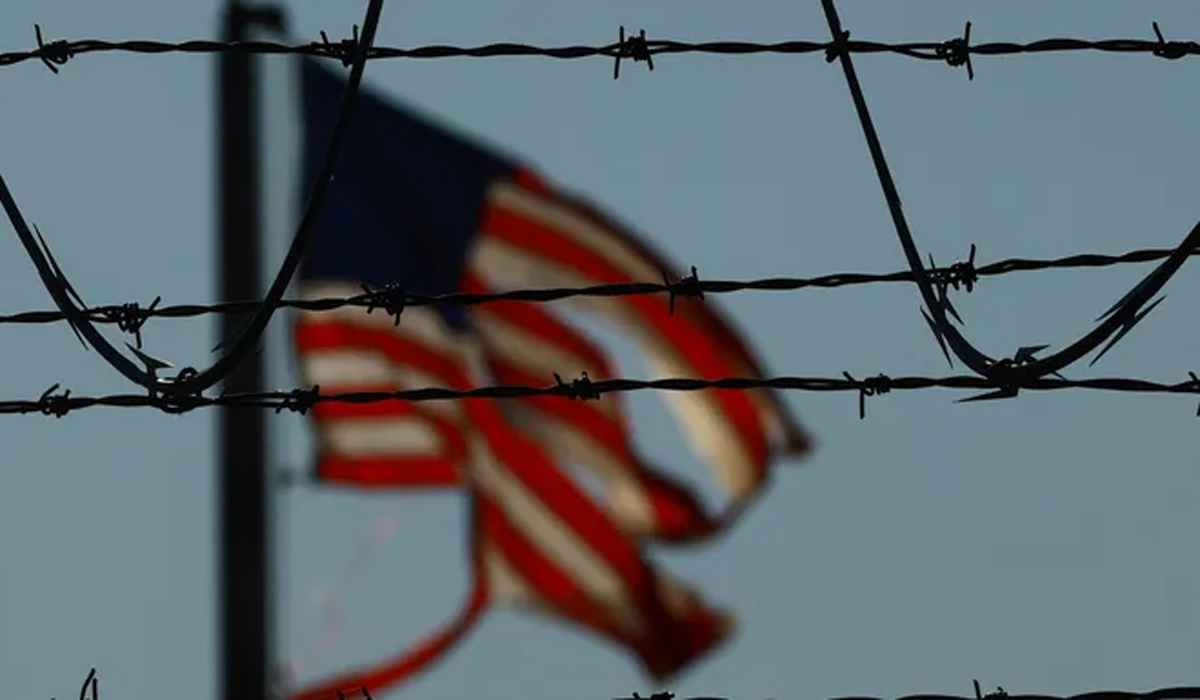
The United States has long faced c h a l l e n g e s related to illegal immigration, and recently, a disturbing trend has emerged—Indian migrants are increasingly abandoning their children at the U.S. borders with Canada and Mexico. This practice, where children are left behind to cross the border alone, has been growing in recent years, particularly with the impending intensification of the U.S. administration’s crackdown on illegal immigration. Reports indicate that this trend is becoming more prevalent, with unaccompanied minors found at various border crossings. In the period from October 2024 to February 2025, U.S. Customs and Border Protection (USCBP) apprehended 77 Indian minors, with the majority found at the southern border with Mexico. This follows a steady increase in the number of Indian minors attempting to cross the U.S. border illegally.
Data suggests that 1,656 unaccompanied Indian children were found trying to enter the U.S. between 2022 and 2025, with a significant spike in 2023 when 730 children were apprehended. What is driving this unsettling phenomenon? Experts suggest that this trend is not merely a result of desperation; it is part of a broader strategy employed by Indian families aiming to gain entry into the U.S. illegally. In many cases, parents who are already in the U.S. illegally attempt to bring their children in as a means of securing asylum or residency for themselves. Some believe that these children act as “green cards” for their parents, allowing them to seek refuge on humanitarian grounds once the children are detained at the border.
In these situations, when minors are caught crossing the border, their parents often claim asylum based on the fact that their children are already in the U.S. Once these children are under U.S. government custody, parents can then pursue legal residency. Alternatively, children may be abandoned by adults who have already crossed the border, leaving the minors to be found by U.S. authorities. One family from Gujarat, India, detailed their experience in an interview
The couple, who entered the U.S. illegally in 2019, sent for their young son in 2022, when he was five years old. Due to the COVID19 pandemic disrupting normal transportation routes, the child was brought by a relative who crossed into the U.S. illegally and left him at the border, where U.S. officials quickly apprehended him. The family explained that the strategy, although unconventional and risky, was seen as the quickest way to get their child into the U.S. without waiting for legal channels.
Such practices are not isolated. Families in rural Gujarat, especially from villages like Jhulasan and Mokasan, have increasingly resorted to sending their children to the U.S. with the hope that they will be taken into U.S. custody and later reunited with their parents. The parents justify their actions by claiming that sending their children to the U.S. will provide them with better opportunities for education and employment, which would be otherwise difficult to access in India. They see this as a chance for their children to start their new lives earlier, and they believe the risks involved in sending them to the U.S. border are worth it.
Authorities in Gujarat are aware of this practice but are limited in their ability to intervene. One officer pointed out that these actions are not illegal under Indian law. The responsibility for addressing the issue lies with U.S. authorities, who must prevent the exploitation of these minors as part of illegal human trafficking operations.
As the U.S. faces an increase in such cases, the Trump administration’s crackdown on illegal immigration continues to intensify. The Department of Homeland Security (DHS) has begun targeting unaccompanied minors specifically. DHS has reportedly launched “welfare checks” on children who have crossed the border without their parents, particularly those who entered through the U.S.-Mexico border. Immigration and Customs Enforcement (ICE) has also ramped up efforts to find unaccompanied minors across the U.S. The agency’s goal is to either deport these children or prosecute the individuals responsible for caring for them once they enter the country. In March 2025, a federal judge in California ruled that the U.S. government must restore legal aid to tens of thousands of unaccompanied migrant children who had been left without representation after the government canceled a contract with the Acacia Center for Justice.
This decision follows concerns that the absence of legal representation severely hampers the children’s chances of receiving fair hearings in immigration court. T h e i n c r e a s e i n unaccompanied minors at the U.S. border highlights the growing complexity of illegal immigration, with children now increasingly used as pawns in a broader strategy. Parents or guardians send their children to the U.S. under the belief that they will be provided with legal protection once they arrive, with hopes that they will eventually be reunited with their families. But this has raised ethical concerns regarding the safety and welfare of the minors involved in these incidents.
Despite the challenges posed by this issue, experts believe that addressing the underlying causes—such as poverty, lack of opportunity, and political instability in countries like India— will be crucial in curbing this troubling trend in the future. While the legal and humanitarian implications of these cases remain a subject of debate, one thing is clear: the involvement of children in illegal immigration is becoming an increasingly complex issue. As immigration policies continue to evolve, the U.S. must balance enforcement with the protection of vulnerable minors who find themselves caught in the crossfire of larger geopolitical dynamics.
